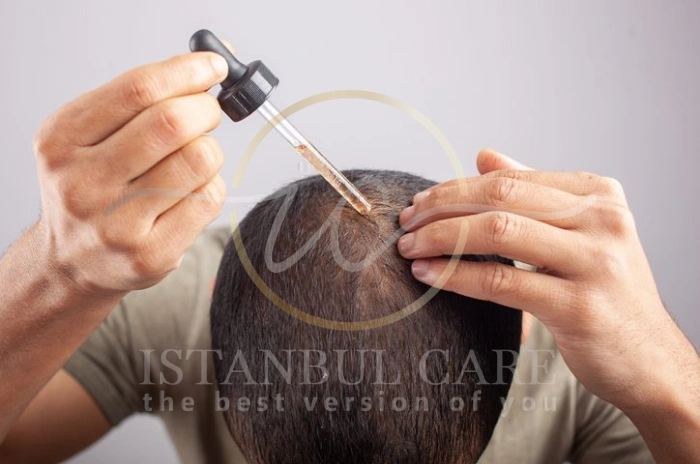Alopecia areata is a common autoimmune condition that affects millions of people worldwide, causing sudden and unpredictable hair loss. This condition creates distinctive round or oval bald spots on the scalp, eyebrows, beard, or other body areas. Unlike other forms of hair loss, alopecia areata can strike at any age and often develops without warning signs.
Understanding this condition is crucial for those experiencing patchy hair loss and seeking effective solutions. The unpredictable nature of alopecia areata can be emotionally challenging, but with proper knowledge and treatment approaches, many people successfully manage their symptoms and achieve hair regrowth.

What Is Alopecia Areata?
Alopecia areata is an autoimmune hair loss condition where the body’s immune system mistakenly attacks healthy hair follicles. This attack causes hair to fall out suddenly, typically in small, round patches about the size of a coin. The condition affects both men and women equally and can occur at any age, though it most commonly begins during childhood or young adulthood.
Patchy alopecia areata is the most common type, creating isolated hair loss patches on the scalp. More extensive forms include alopecia totalis and alopecia universalis. What makes alopecia areata unique is its unpredictable pattern – hair can fall out rapidly but can also regrow suddenly.
The hair follicles remain intact during alopecia areata, which means hair regrowth is always possible. However, the condition is chronic and unpredictable, with periods of hair loss followed by potential regrowth cycles.
| Alopecia Areata Types | Hair Loss Pattern | Severity Level |
|---|---|---|
| Patchy Alopecia Areata | Small round patches | Mild to Moderate |
| Alopecia Totalis | Complete scalp hair loss | Severe |
| Alopecia Universalis | Total body hair loss | Most Severe |
Common Symptoms of Alopecia Areata
The primary symptom of alopecia areata is sudden patchy hair loss that creates distinct round or oval bald spots. These patches typically measure one to four centimeters in diameter and appear on the scalp, though they can occur on any hair-bearing area. The skin in affected areas remains smooth and healthy-looking.
Hair loss patches often develop rapidly, with hair falling out over days or weeks. Some people notice hair coming out in clumps during washing or brushing. The edges of bald spots may show short, broken hairs that appear tapered at the base, resembling exclamation marks.
Beyond scalp involvement, alopecia areata symptoms can include loss of eyebrow hair, eyelashes, and beard hair. Nail changes alopecia areata presents another important symptom – affected individuals may develop small pits, ridges, or white spots on their fingernails and toenails.
Causes and Risk Factors of Alopecia Areata
Alopecia areata develops when the immune system mistakenly identifies hair follicles as foreign invaders and attacks them. This autoimmune hair loss process causes inflammation around follicles, forcing them into a resting phase. Scientists believe this immune malfunction results from genetic predisposition and environmental triggers.
Genetics play a significant role in alopecia areata causes. People with family members who have the condition face higher risks. Environmental factors and stress often trigger episodes in genetically susceptible individuals. Physical stressors like illness or surgery can precipitate hair loss, as can emotional stress from major life changes.
Other autoimmune conditions frequently coexist with alopecia areata. People with thyroid disorders, type 1 diabetes, or vitiligo have higher rates of developing patchy hair loss. This connection helps doctors understand the broader autoimmune context.
| Risk Factors | Description |
|---|---|
| Family History | 4-6 times higher risk with affected relatives |
| Age of Onset | 50% of cases begin before age 30 |
| Autoimmune Conditions | Higher risk with thyroid, diabetes, vitiligo |
| Stress Triggers | Physical illness, emotional trauma, surgery |
Best Treatments for Alopecia Areata
Alopecia areata treatment varies depending on the extent of hair loss, patient age, and individual response to different therapies. Dermatologist treatment alopecia areata typically begins with less aggressive options and progresses to stronger therapies if needed.
Topical corticosteroids represent the first-line treatment for limited patchy alopecia areata. These anti-inflammatory medications help reduce immune system activity around hair follicles. Hair regrowth often begins within 8-12 weeks of consistent use.
For more extensive hair loss patches, corticosteroid injections offer a more potent approach. This treatment delivers medication directly into affected areas, achieving higher local concentrations while minimizing side effects.
JAK inhibitors alopecia treatment represents a breakthrough in management. These newer medications work by blocking specific immune pathways involved in attacking hair follicles. Clinical trials show promising results, particularly for severe cases of alopecia totalis.
Contact immunotherapy involves applying chemicals to create controlled allergic reactions that redirect the immune system. Natural remedies alopecia options include essential oils and stress reduction techniques, though scientific evidence remains limited.
| Treatment Options | Best For | Success Rate |
|---|---|---|
| Topical Corticosteroids | Limited patches | 60-70% |
| Steroid Injections | Multiple patches | 70-80% |
| JAK Inhibitors | Severe cases | 50-60% |
| Contact Immunotherapy | Extensive loss | 40-60% |

Using Minoxidil to Keep Hair After Regrowth
Minoxidil for alopecia areata serves as an important maintenance therapy once hair regrowth begins. This FDA-approved medication, originally developed for high blood pressure, promotes hair growth by improving blood flow to hair follicles and extending the growth phase of the hair cycle. While not specifically approved for alopecia areata, many dermatologists recommend it as part of comprehensive treatment plans.
The medication works by widening blood vessels around hair follicles, delivering more nutrients and oxygen to support healthy hair growth. Minoxidil for alopecia areata can help newly regrown hair become thicker and stronger while potentially reducing the likelihood of future hair loss patches. Patients typically apply the solution or foam twice daily to affected areas.
Starting minoxidil for alopecia areata during active hair regrowth phases can maximize its benefits. The medication helps stabilize recovering hair follicles and may extend periods of remission between alopecia areata episodes. However, patients must understand that discontinuing minoxidil may lead to gradual hair loss, as the medication’s effects are not permanent.
Managing alopecia areata with minoxidil requires patience and consistency. Results typically become visible after 3-4 months of regular use, with maximum benefits appearing around 6-12 months. Side effects are generally mild and may include scalp irritation, itching, or unwanted hair growth in areas where the medication accidentally spreads.
Combining minoxidil for alopecia areata with other treatments often produces better outcomes than using any single therapy alone. Dermatologist treatment alopecia areata frequently incorporates minoxidil alongside corticosteroids, JAK inhibitors alopecia, or other medications to create comprehensive treatment protocols tailored to individual patient needs and disease severity.
Who Gets Alopecia Areata?
Alopecia areata affects approximately 2% of the population worldwide, making it one of the most common autoimmune conditions. The disease shows no preference for gender, affecting men and women equally across all ethnic groups and geographical regions. However, certain demographic patterns and risk factors influence who develops this autoimmune hair loss condition.
Age plays a significant role in alopecia areata development, with most cases beginning before age 30. Nearly 50% of people experience their first episode during childhood or adolescence, often between ages 10-20. Early onset patchy alopecia areata may indicate a more severe course with higher likelihood of progression to alopecia totalis or alopecia universalis.
Family history significantly increases alopecia areata risk. People with affected relatives have approximately 4-6 times higher chances of developing the condition compared to the general population. This genetic component suggests inherited immune system variations that predispose individuals to autoimmune hair loss when exposed to environmental triggers.
Individuals with other autoimmune conditions face elevated risks of developing alopecia areata. Those with thyroid disorders, vitiligo, type 1 diabetes, or inflammatory bowel disease experience higher rates of patchy hair loss. This clustering of autoimmune conditions reflects shared genetic susceptibilities and immune system dysfunction patterns.
People with Down syndrome have particularly high rates of alopecia areata, with studies showing prevalence rates 10-20 times higher than the general population. Additionally, individuals with certain HLA genetic markers, particularly HLA-DQ and HLA-DR types, show increased susceptibility to developing hair loss patches and may experience more severe disease courses.
Speak with our expert Hair Transplantation specialists

Speak with our expert Hair Transplantation specialists
We’re ready to answer your questions
FAQs for Alopecia Areata Hair Fall Symptoms Causes and Treatment
Alopecia areata is an autoimmune condition where the immune system attacks hair follicles, causing sudden patchy hair loss in round or oval bald spots.
Doctors diagnose alopecia areata through physical examination of hair loss patches, medical history review, and sometimes scalp biopsy or blood tests to rule out other conditions.
The main cause is an autoimmune response where the body’s immune system mistakenly attacks healthy hair follicles, triggered by genetic predisposition and environmental factors.
Yes, effective alopecia areata treatment options include topical corticosteroids, steroid injections, JAK inhibitors alopecia, contact immunotherapy, and minoxidil for alopecia areata maintenance therapy.

